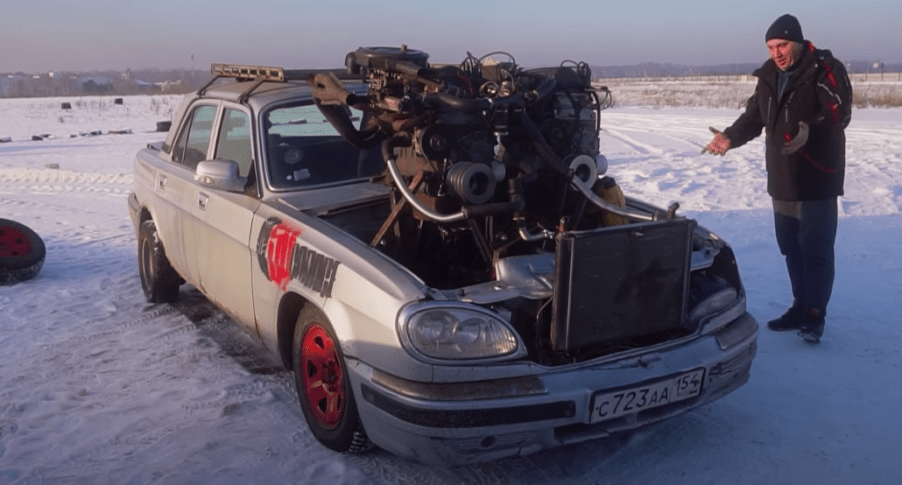
Watch: 12 Cylinder Engine The Hard Way
Cable TV and YouTube are full of bad car shows but one we like is Garage 54. First, since it is from Russia you get the vibe of just how bad it is there. But they always come up with some stupid idea that you have to see played out. That’s especially true for this one where they try to get a 12-cylinder engine the hard way; hooking three engines in parallel with belts tied to crankshaft pulleys.
The two top engines use a common pulley tied to the factory engine

This is the second time they have done this but the first was when they tied them together in series. In other words, front to back. This time the two top engines use a common pulley to the factory engine which transfers the power to the Russian GAZ manual transmission. Check out the shenanigans here:
Of course, the big problem with using belts is slippage. Especially when they are V-belts like those used for spinning an alternator. For this, they needed to make sure the pulleys were aligned perfectly as well as the V-belt having the proper tension.
The engines will never run at the same RPM

The other problem is synchronization. While you try to get synchronization close, the engines will never run at the same RPM. But you have to at least sync the carburetors as close as you can. Then there is also throttle linkage to think about since the amount of fuel dictates how much power is produced.
Those two top engines were welded into the car and also welded to themselves at the valve covers. The cooling system was kludged together. The lower engine circulates the water into the top two engines. Then the water is collected from each engine and channeled back to the radiator.
There is a certain science to the size of the V-belts you use, the size of the pulleys, and other factors, to achieve a good transmission of power. Motorcycles do a good job of doing that, but they tend to use wider belts with teeth that align with grooves in the pulleys. Back in the days when drag racers used multiple engine applications they mostly used chains and sprockets. But that can have barbaric results should a link break, or critical chain tension not be achieved.
Twin- and quad-drive engines were usually tied together at the front of the crank

These twin- and quad-drive engines were usually tied together at the front of the crank. And remember the old Ford SOHC engines used in mid-1960s drag racing? They used a chain to tie the double overhead valve trains together. Because there was a certain amount of slop and chain stretch one bank would be timed differently from the other. But it was a lot of trial-and-error to get it all to run smoothly.

Towards the end of the SOHC’s life in drag racing “Sneaky” Pete Robinson pitched all of the chain mumbo-jumbo and went with an elaborate gear-drive system. But he was also experimenting with aerodynamics which contributed to a horrible crash that took his life before the soundness of his gear-drive SOHC could be fully realized.



